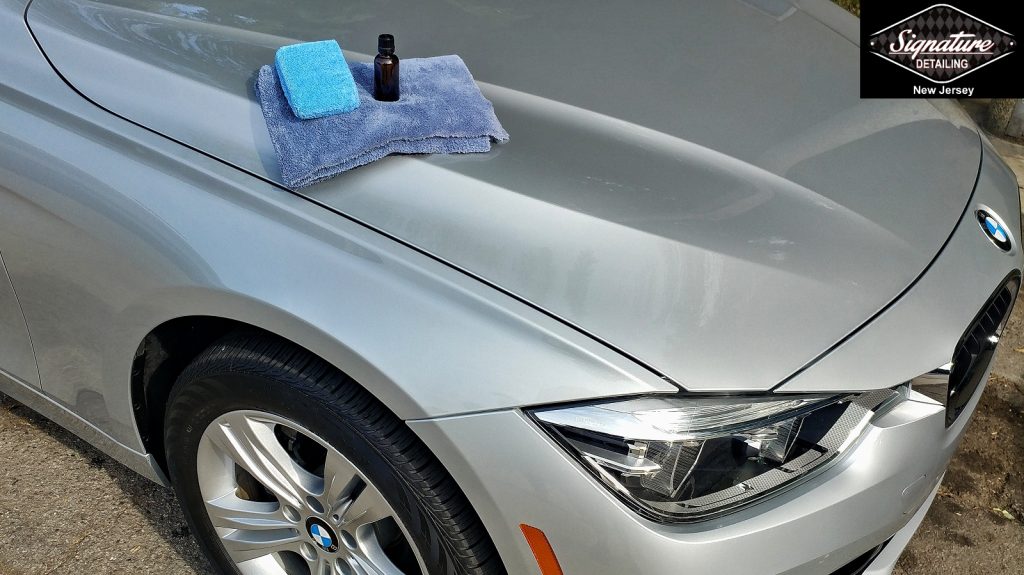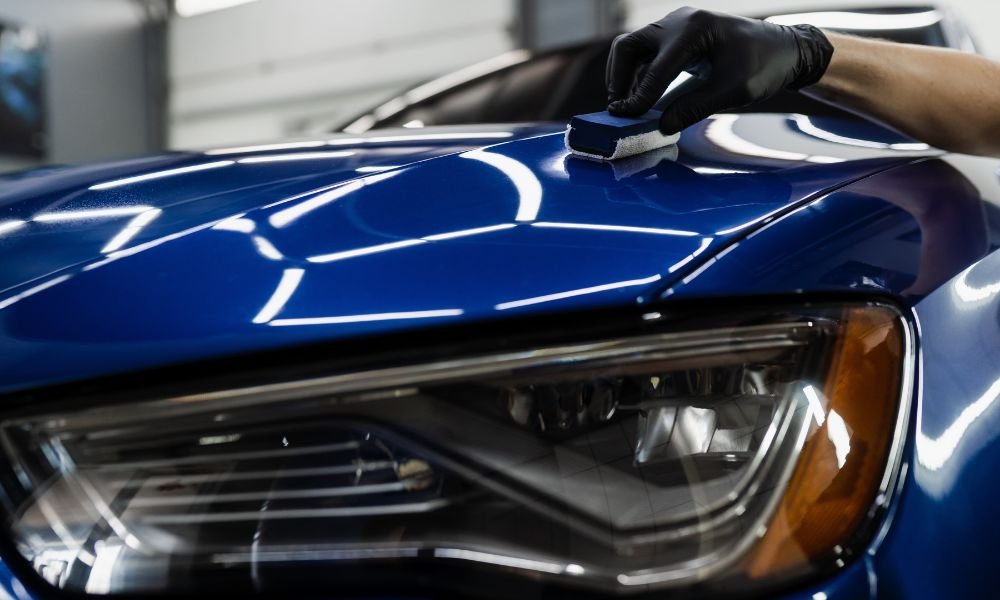The Role of Ceramic Coating Philadelphia in Avoiding Scrapes and Damages
The Role of Ceramic Coating Philadelphia in Avoiding Scrapes and Damages
Blog Article
Why Ceramic Finish Is the Ultimate Option for a Perfect End Up
Ceramic coating has arised as a leading remedy for those looking for a perfect coating for their lorries, thanks to its amazing resilience and safety features. What elements genuinely established ceramic finish apart?
What Is Ceramic Covering?

When applied properly, ceramic finish develops a hydrophobic surface area that pushes back water and dirt, making it easier to preserve and cleanse. Unlike standard waxes or sealants, which typically offer brief security, ceramic layers can last for several years, relying on the product top quality and application technique. The process of using ceramic finishing calls for precise preparation, consisting of detailed cleaning and often paint adjustment, to ensure ideal bonding and effectiveness.
Ceramic finishes are not restricted to automobile surfaces; they can likewise be used on numerous materials, consisting of glass, metal, and plastics, supplying a functional solution for improving security. Generally, ceramic finish represents a considerable development in surface defense innovation, integrating both functional and visual advantages for a variety of applications.
Benefits of Ceramic Covering
While lots of surface security alternatives exist, the benefits of ceramic finishing stand out as a result of its one-of-a-kind residential or commercial properties and long-lasting performance. Among the key advantages is its exceptional longevity. Ceramic Coating Philadelphia. Unlike conventional wax or sealants that require regular reapplication, ceramic finishes provide a durable layer that can last for several years, considerably minimizing upkeep efforts
An additional noteworthy advantage is improved defense against ecological pollutants. Ceramic finishes develop a hydrophobic surface that repels water, dust, and various contaminants, making it less complicated to clean. This attribute not only preserves the car's look yet also minimizes the danger of rust and oxidation, especially in severe climate condition.
Furthermore, ceramic finishes use superior resistance to UV rays, stopping fading and deterioration of paint over time. This UV protection is vital for preserving the aesthetic worth of lorries and surface areas subjected to guide sunlight.
Additionally, the glossy surface achieved with ceramic layer enhances the general aesthetic appeal, giving surface areas a showroom-quality shine. Generally, ceramic finishings represent a considerable development in surface area security modern technology, supplying long-lasting benefits that satisfy both practical and aesthetic demands.
Just How It Works
Understanding the scientific research behind ceramic coatings discloses just how they provide such impressive protection and longevity. At its core, a ceramic finish is a fluid polymer that chemically bonds with the automobile's manufacturing facility paint.
The application process involves multiple steps, including surface preparation, which is essential to achieving optimum bond. When used, the finish goes through a curing process, during which it hardens and creates a semi-permanent bond with the paint surface area. This bond is what distinguishes ceramic finishings from conventional waxes and sealers, supplying a longer-lasting protective obstacle that can sustain for many years.
Moreover, the density of the covering can improve its protective top qualities, making sure that it can withstand extreme problems. Eventually, the scientific research of ceramic finishings combines advanced products with innovative application techniques to deliver an exceptional level of security and visual improvement for vehicles.
Contrast With Traditional Techniques
The advantages of ceramic coverings become especially apparent when contrasted to conventional paint protection approaches such as sealers and site web waxes. While waxes provide a short-lived luster, generally lasting a few weeks to a couple of months, ceramic coatings supply a long-lasting protective layer that can withstand for a number of years. This longevity significantly reduces the regularity of reapplication, making ceramic finishings an extra cost-efficient option over time.
Additionally, typical methods commonly call for extensive preparation and numerous applications to achieve an acceptable level of defense. On the other hand, ceramic layers bond at a molecular level with the automobile's surface area, developing a durable guard against environmental impurities like UV rays, acid rainfall, and road salts. This bond enhances the automobile's resistance to scratches and swirl marks, which prevail with traditional waxes and sealants.
In addition, the hydrophobic buildings of ceramic finishings push back water and dirt, resulting in much easier cleansing and upkeep. On the other hand, wax and sealant-treated surfaces can draw in grime, necessitating even more constant washing - Ceramic Coating Philadelphia. Overall, ceramic coatings not just offer superior security yet also provide an extra enduring and visually appealing finish, developing them as the recommended option for discerning vehicle proprietors
Application and Maintenance Tips

Making use of a foam applicator, use the covering in little areas, following the supplier's guidelines pertaining to thickness and overlap. Permit enough curing time between layers, generally 24-hour, to make certain proper bonding. After application, it is important to stay clear of exposure to water or extreme components for at the very least a week to permit the coating to fully treat.
For upkeep, clean the car consistently with pH-balanced soaps and stay clear of abrasive products. Touchless auto laundries are recommended to lessen scratching. In addition, utilizing a ceramic maintenance spray can boost the layer's hydrophobic residential or commercial properties and longevity. Normal inspections for any type of signs of wear will certainly aid keep the coating's integrity and maintain that beautiful finish.
Verdict
In verdict, ceramic finishing becomes a superior alternative for achieving a flawless auto coating. Its phenomenal sturdiness, protective qualities, and hydrophobic homes substantially boost the car's appearance while streamlining upkeep efforts. By developing a robust bond with manufacturing facility paint, ceramic finishing properly guards versus scrapes, UV rays, and environmental contaminants. With a life-span extending a number of years, this advanced remedy not only protects but additionally raises the general aesthetic charm of lorries, making it a cost-effective financial investment for cars and truck fanatics.

Report this page